- Tesla announced Standard base variants of the Model 3 sedan and the Model Y SUV.
- The Model 3 and Model Y Standard exchange some features and capabilities for price tags thousands below the previous entry-level trims.
- As of this writing (prices can change quickly), the Model 3 Standard starts at $38,630, with the Model Y Standard not far behind at $41,630.
At a time when it feels like everything is getting more expensive by the hour, it’s refreshing to see an automaker roll out more affordable models. That’s exactly what happened in Texas this week, with Tesla announcing a new Standard base variant for its compact EVs, the Model 3 and Model Y.
The new models also introduce a mild rejiggering of Tesla’s trim-naming convention. Now that the Standard models occupy the entry level, the cars formerly known as Long Range are now called Premium. The Performance remains at the top of the pile—but anybody can pad margins and build an expensive car. Let’s see what Tesla had to do to bring prices down rather than send them up.
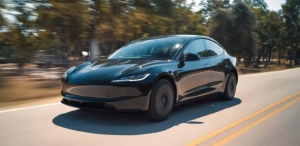
Model Y Standard
The Model Y is immensely popular, so it stands to reason that a more affordable version of the Model Y would also do well. Thankfully, while Tesla did have to make several adjustments to bring the price down, we don’t think you’ll miss anything that got cut.
While the Model 3 gets off a little light in the makeover department, the Model Y clearly spent some time in the chair. The light bars that span the gap between the headlights and taillights have been removed. As a result, the front picks up a new fascia where all the lighting elements are integrated into a pair of sleek little peepers. New smaller wheels are also part of the package; standard fare is a set of 18-inchers, with 19s being optional. Smaller wheels mean more room for tire sidewall, so the ride should be pretty cushy. The body is only available in white, black, or gray—and gray is the only freebie. If you watch the video or look at any of the pictures, you’ll notice we filmed with a blue Model Y. This was one of the available paint colors until the night before this story was published, when it was replaced with gray.
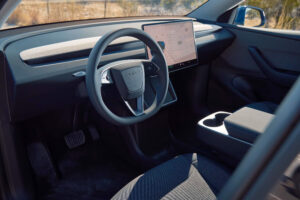
The interior gets some de-contenting too—the lion’s share of it, in fact. The seats drop half of their vegan leather for textile inserts. There’s a new center console with a massive open well that borrows its inspiration from the Cybertruck’s console. The steering wheel is manually adjustable, and the turn-signal stalk remains. The front seats lose ventilation, while the rears lose heating. Speaking of the back seats, the eight-inch rear touchscreen has been cut in favor of manual vents. The 15.4-inch front touchscreen is still there, though, still doing double-duty as both infotainment screen and gauge cluster.
The most interesting change to the interior by far is the glass roof, which only exists on the outside of the car. Yes, you read that correctly; Tesla installed a proper headliner and a bunch of sound-absorbing material behind it, pulling a Cask of Amontillado and sealing occupants off from the panoramic glass above. The company claimed this was more cost-efficient than designing and installing a fixed metal roof.
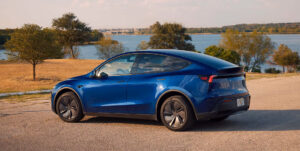
The powertrain is a little less potent, and the battery a little less capacious, but the two still put out decent figures. The Model Y Standard rocks a single electric motor on the rear axle, producing 300 horsepower, which is less than you get in the Premium RWD variant. As such, the 60-mph sprint suffers a bit; Tesla estimates a 6.8-second run for the Standard, which is a far cry from the Premium RWD’s 5.4-second estimate. (We managed 5.1 seconds at the test track with a pre-name-change Long Range RWD.)
The battery loses about 10 percent of its capacity thanks to a reduction in P-count (the number of cells connected in parallel), settling in at 69.5 kWh of usable capacity. Range estimates are still pretty good, though, with Tesla claiming 321 miles of range on the standard 18-inch wheels and 303 miles on the optional 19s. Hook it up to a Supercharger and it’ll pull 225 kilowatts, which is a small reduction from the 250 kilowatts seen on other Model Ys.
Model 3 Standard
The Model 3 Standard escapes with fewer changes to the outside. Since there were no body-crossing light bars to begin with, there were none to nix. As such, the Model 3 Standard doesn’t look too different from the newly renamed Premium line, save for a new front-mounted camera, but that’ll make its way to other Model 3s eventually as well. As with the Model Y Standard, 18-inch wheels are de facto fare, with optional 19s. The paint colors are equally limited; gray’s the only free one, with white and black requiring a little extra scratch.
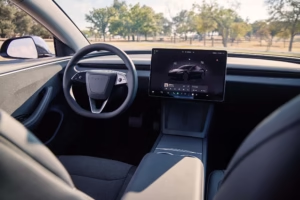
The interior changes are about the same, as well, though once again the Model 3 doesn’t get as heavy a haircut. The main changes are present—textile seats, no rear touchscreen, a manual steering wheel (with the turn-signal stalk returning in this case)—but the Model 3 retains cabin access to the glass roof.
Under the body, the battery’s changes are the same, with a reduced P-count leading to a usable capacity of 69.5 kWh. Range estimates are, oddly enough, exactly the same as the Model Y Standard. You’re estimated to get 321 miles of range on the 18s and 303 miles on the 19s. Supercharging is limited to 225 kilowatts here as well.
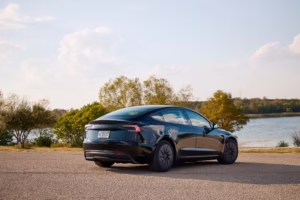
When it comes to the Model 3 Standard’s power, we’re a little confused. According to Tesla, the Standard’s rear-mounted electric motor makes 286 horsepower. But, at the same time, Tesla told us previously that the Long Range RWD model makes 286 horsepower. Last we checked, physics would stand to reason that of two equally powerful cars, the heavier model would be the slower one. Yet, Tesla claims the lighter Standard RWD is slower, at 5.8 seconds to 60 against the Premium RWD’s 4.9 seconds. That math isn’t mathing, as the kids would say. As of this writing, Tesla did not return our request for clarification.
Pricing and How to Check Them Out
It’s worth noting that Tesla changes its pricing strategy like the average person changes shirts, so, while the pricing here is accurate as of this writing, you should head to Tesla’s website—the cars are already live in the configurator—to confirm all that good stuff.
But as of this writing, the Model 3 Standard will start at $38,630, which represents a $5500 cost savings over the Model 3 Premium RWD. The Model Y Standard is only a few thousand more expensive at $41,630, which is $5000 less than you’d pay for a Model Y Premium RWD.

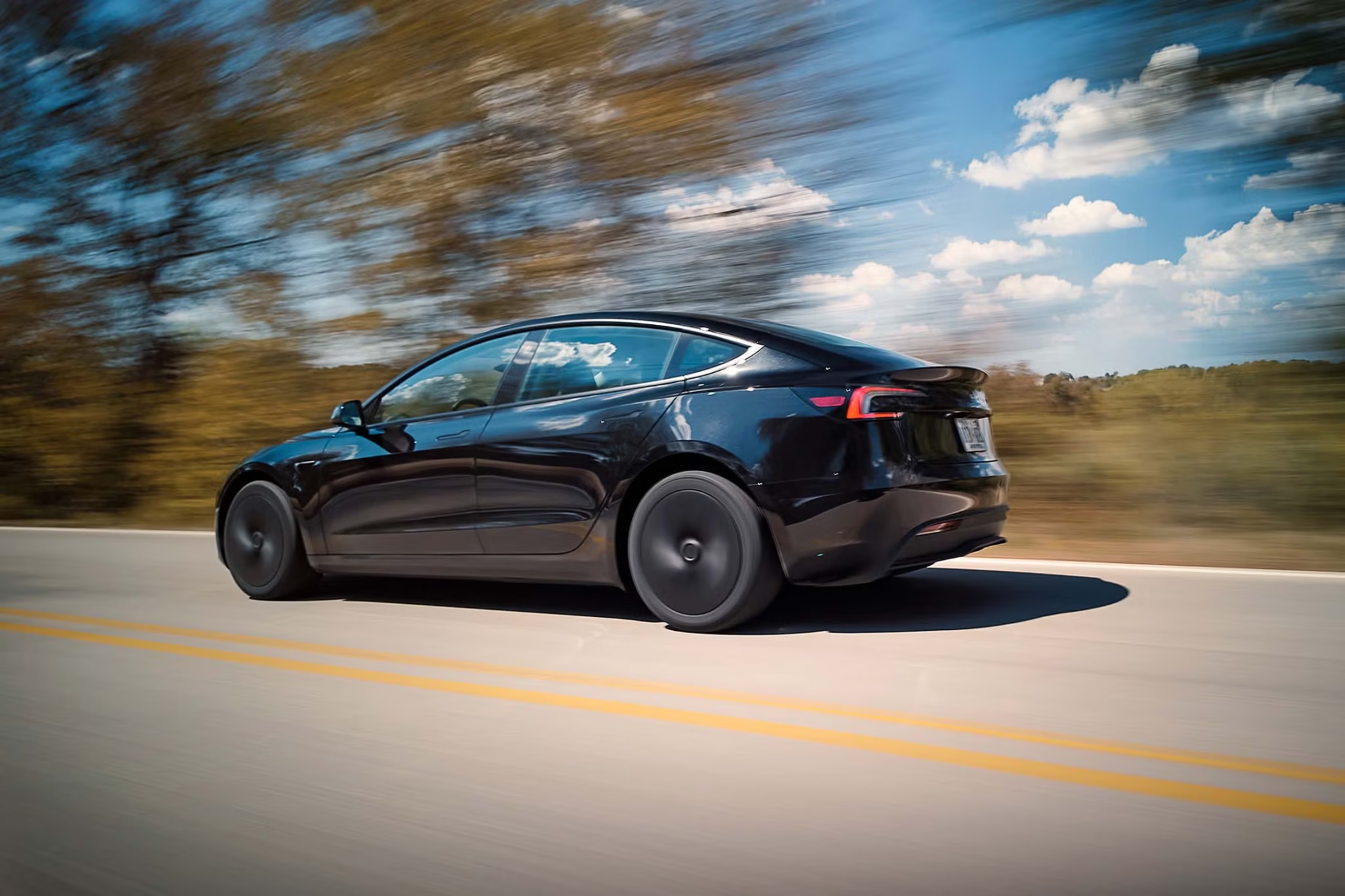
![The 2026 Hyundai Ioniq 5 Gets Up To $9,800 Cheaper As Tax Credits End [Update]](https://driveelectriclongisland.org/wp-content/uploads/2025/10/hyundai-ioniq-5-xrt-65x65.png)



